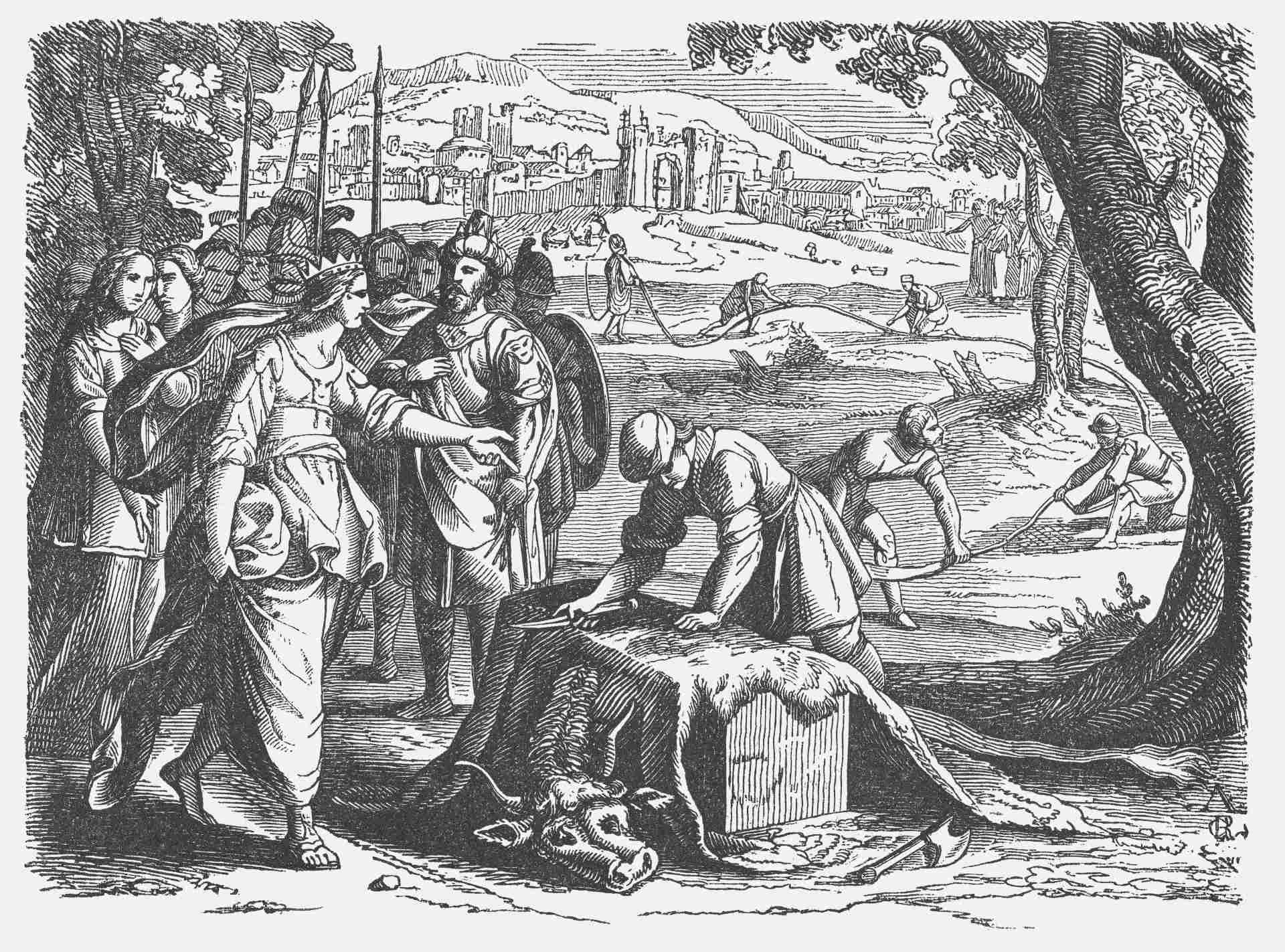Elisa deceived him and fled Tyre with her younger sister and an entourage of men and women who were loyal to her. Their final destination was a point on the coast of North Africa. Elisa presented herself to the king and asked him to give her a piece of land to found a city.
According to the legend, the monarch gave her an ox skin; that would be the area that would cover his city. Elisa was not intimidated by such a provocation. She took the skin, cut it into the thinnest strips she could and draw an extensive perimeter on which she erected the fortress of the city that will later be known as Carthage. Elisa was crowned queen and her new subjects baptized her with the name of Dido.
What does the story of Dido teach us?
Dido, being humble, managed to escape from her brother and get the land to build the city of Carthage. Traditionally, humility has been fundamentally a trait of female leadership. And it is, without a doubt, also an essential characteristic for being a great leader. Without humility it will be very difficult for anyone in charge to recognize their mistakes, learn from experience, consider other people’s perspectives, and be willing to change and improve.
Agnodice (Greece, 4th century BC)
The next example of female leadership is the first woman who dared to be a scientist. Agnodice achieves this by pretending to be a man. As a child she saw how women suffer (and die) during childbirth, usually because they preferred to fend for themselves rather than seek the help of a man. The Athenians forbade women to practice medicine because they suspected them of performing abortions.
Outraged by this situation, Agnocide secretly went to Egypt to study medicine. After training, she returned to Greece and pretended to be a man in order to practice her profession. She soon became the gynaecologist of Athens and her success caused her colleagues to accuse her of abusing her patients. Agnodice was forced to uncover his true identity to confront such facts.
She was sentenced to death for the illegal practice of medicine. Fortunately, her patients mobilized and managed to save her. The Athenians not only ended up acquitting her, but also authorized women to practice medicine in Athens.
What can we learn from Agnodice?
The importance of empathy. Success requires leaders to establish an emotional connection with their followers. As a physician, she was able to connect with her patients’ needs and, as a result, they were there for her when the gynecologist needed them.
Isidora Goyenechea (Chile, 1836)
She was a businesswoman more by inheritance than by her own initiative. But once the power was in her hands, she knew how to lead her family’s businesses in a genuine way. In 1873 Isidora was widowed, and ended up managing her late husband’s businesses, including the mines of Lota and Coronel, which continued to deliver supplies during the War of the Pacific thanks to this example of female leadership.
In Lota, Goyenechea was concerned with paving streets and ensuring that the workers’ houses had sanitation services, in addition to founding the Pequeño Cottolengo home for orphans. These actions mean that, today, she’s considered one of the pioneers of Corporate Social Responsibility. Not to mention that she made the installation of the first hydroelectric plant in South America, the Chivilingo plant, in 1897.
What do we get out of this story?
The importance of putting your people before yourself. Isidora Goyenechea is an example of this. By dedicating resources and attention to her employees and local communities she achieved great business results.
People who approach leadership as an individual achievement are too self-centered to foster the well-being of their teams and unlock the potential of their subordinates.

